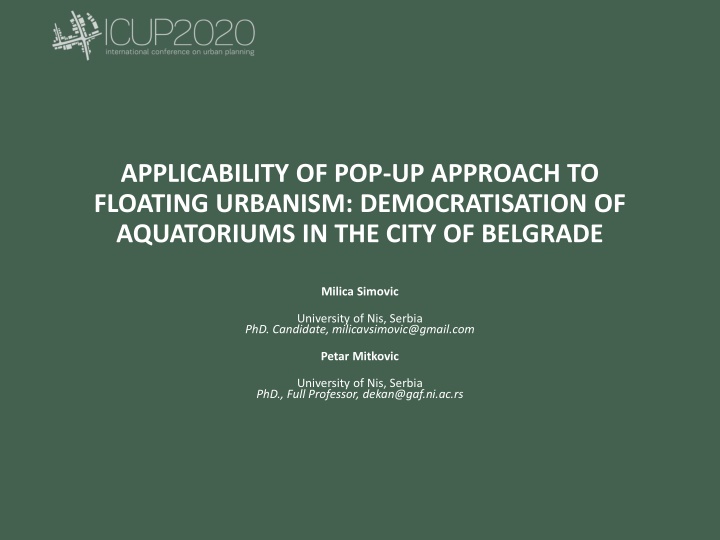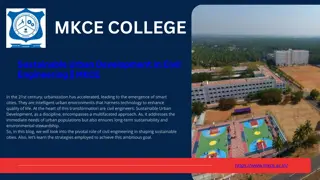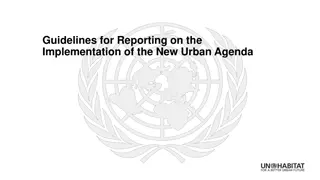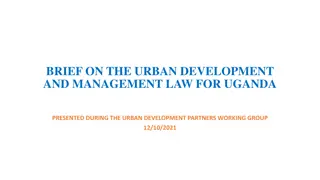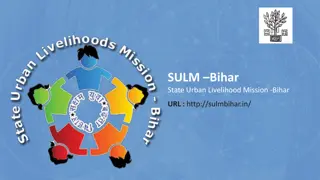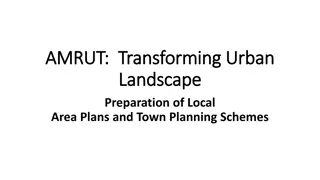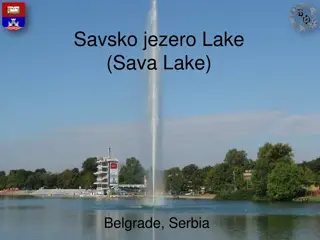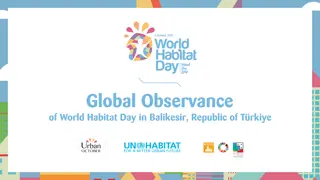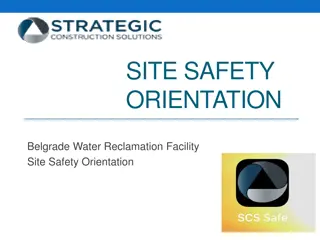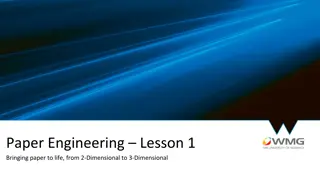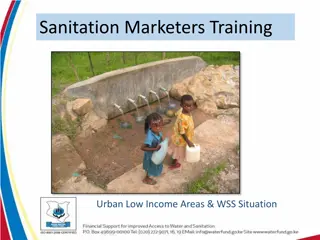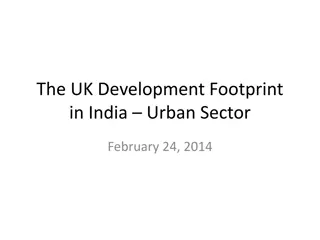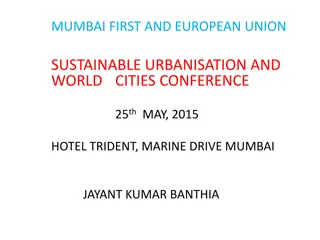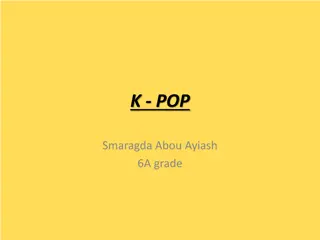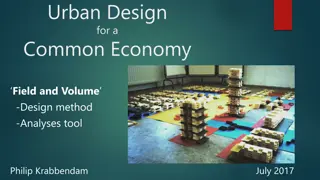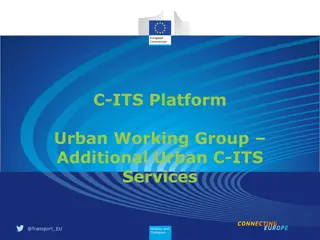Transforming Urban Aquatoriums Through Pop-Up Approach in Belgrade
Belgrade, known for its floating nightlife venues, faces challenges with existing floating structures. This research explores democratizing aquatoriums through pop-up urbanism, aiming to create a dynamic, inclusive, and sustainable waterfront environment. By reimagining floating architecture as adaptable and community-driven, it seeks to address issues of ownership, aesthetics, and environmental impact while enhancing public access to the city's aquatic spaces.
Uploaded on Sep 11, 2024 | 3 Views
Download Presentation

Please find below an Image/Link to download the presentation.
The content on the website is provided AS IS for your information and personal use only. It may not be sold, licensed, or shared on other websites without obtaining consent from the author.If you encounter any issues during the download, it is possible that the publisher has removed the file from their server.
You are allowed to download the files provided on this website for personal or commercial use, subject to the condition that they are used lawfully. All files are the property of their respective owners.
The content on the website is provided AS IS for your information and personal use only. It may not be sold, licensed, or shared on other websites without obtaining consent from the author.
E N D
Presentation Transcript
APPLICABILITY OF POP-UP APPROACH TO FLOATING URBANISM: DEMOCRATISATION OF AQUATORIUMS IN THE CITY OF BELGRADE Milica Simovic University of Nis, Serbia PhD. Candidate, milicavsimovic@gmail.com Petar Mitkovic University of Nis, Serbia PhD., Full Professor, dekan@gaf.ni.ac.rs
o The city of Belgrade is well-known as city of splavs, floating restaurants and clubs where entertainment content creates unique nightlife experience. o In the area of the city of Belgrade, HoReCa facilities (Hotel/Restaurant/Caf ) are assigned to an area of water and river shore to place a vessel for a minimum of 10 years and recognized as primarily function. o Existing plans failed to articulate private owners to act accordingly to General urbanistic plan. o The autonomy given to the water-land tenants transformed the essential natural resource into a sluggish and undemocratic urban structure in a fluid environment and a mobile, "fluid" society. o The complexity of understanding the relationship between private and public good, the dual nature of ownership: formal and informal, finds its expression in various forms of tactile (pop-up, guerrilla, DIY) culture. o In architecture and urbanism, these are low-cost, mobile structures and projects implemented by the community within the public space, thus supporting social equality. o This research aims to examine the relationship and possible correspondence of pop-up urbanism within the aquatic environment and floating structures in Belgrade.
o Although they can be leased, water and water land are primarily a natural resource of the Republic of Serbia! o The existing regulation on floating structures failed in implementation in practice (in technical, safety, contextual, or aesthetic terms) o That results in problems with noise, contamination of the water area around the objects, frequent fires and accidents on buildings, sewage spills into the river, etc. o Besides, objects of non-standardized design and aesthetics, due to the short distance between them, form, like a street front, a visual barrier between the shore and the river, and create a "first private-then public" relationship. Blocked view from the land on to the river Sava, directly across Kalemegdan fortress
INTRODUCTION o In this context, the democratization of aquatoriums means: creating space on the water which, in addition to physical accessibility, in terms of content, design, and sustainability, would continuously provide the same quality experience of living and recreation to all categories of users. o Given that people's needs are prone to increasingly dynamic changes, the aquatic environment, which is itself changeable, is conditioned to change further, develop, and transform by users' needs in space. o In practice, such "temporary" interventions find their specific expression and are defined by the term tactile (pop-up, guerilla, DIY) architecture. o Changing the approach to floating architecture would mean that from a series of sluggish and content-unified structures of the water area, it would become a changeable, mobile, and fluid environment (guerilla urbanism). o Adaptable planning in the interest of citizens and future generations would provide an opportunity to create and democratize public spaces that could fully illustrate the concept of "Belgrade on the water".
BLOCKED VIEW o Catering includes accommodation facilities (hotels, hostels, etc.) and restaurants (bars, clubs, fast food, cafes). The prescribed minimum distance between facilities is 15m! o In practice, there is no restriction: Overview of the current situation on the river banks in the area of Novi Beograd. Indicated distances show existing objects and spaces between them
LIMITED OPTIONS o According to economic benefit, most floating establishments belong to the catering sector, as the most recognized business filed. o On the other side, in its classification, Bureau Veritas recognizes a much larger number of categories: cinemas, theaters, meeting rooms, shops, dance halls, playrooms, libraries, documentation centers, exhibition spaces, hospitals, clinics, worship and administration, office spaces, museum activities, etc. (2012)
NOISE POLUTION o Citizens who live or stay near floating clubs, due to noise and communal disorder created in nightclubs that work longer than midnight, lose the right to privacy and peace. o The lack of natural or physical barrier on the water surface, allows the wider sound spreading, up to 2km in radius. Comparison of the Seine in Paris (left) and the Sava in Belgrade (right): illustration of the relationship between nightclubs on the river (red dots) and cultural and historical assets in the central city area (blue rings)
Example: sound-proof clubs o Floating restaurant-bars / nightclubs in Paris are Rose de Bonheur sur Seine and Le Flow, whose central location provides access to a prestigious setting. o Floating by the Alexandre III bridge, the buildings have a dialogue with prominent historical sites, representatives of the Parisian identity: the Eiffel Tower, the Grand Palais, and the place de la Concorde. o The condition is that the facilities must be completely soundproof. The use of quality facade glass reduces the noise to the legal level. o The facilities are transparent and visually integrated into the context of the environment.
THE POP-UP o The aquatic environment itself is a specific Pop-up context: it is changeable, volatile, and equally responsive to change as it induces it. Rivers, together with objects that float on them or float anchored, form a significant urban (sub)unit. o Objects or pop-up interventions in space are characterized by the variability of function and location, integrated into the existing, "permanent" urban fabric while retaining recognizability and local identity. o The pop-up environment allows users to transcend the model of 'durability and immutability . o Such a model of observing architecture on water would reflect respect for nature in its authenticity: changes in the microclimate concerning seasonal conditions, constant movement, rising and falling water levels, the variability of river biodiversity, cultural- historical and residential context, etc.
Spaces for expression o In pop-up urban interventions, property law acts in conjunction with a more informal "sense of ownership." Although different from legal ownership, a sense of ownership can provide many benefits sought from a property in its conventional sense: inclusion, community, power, and political voice (Thorpe, 2018). o In the context of Belgrade's floating architecture, creating a counterweight to the tenant's "waters" requires spaces of free views and floating structures that would be free and accessible to all and leave enough space to create an individual experience (in the form of sunbathing areas and bathing parks; floating parks; pontoons available for hobby leads such as reading, writing, drawing; yoga and meditation; exhibition and performance, etc.). o As floating objects' purposes can be different, their quality is reflected in the simplicity of the structure itself, from which multifunctionality arises. The concept of use is also an important factor that needs to be adapted to the community's needs while enriching the space regarding content and responsibility towards the environment. o Objects in private ownership or organization do not necessarily have a negative connotation. Examples of this are the organization of floating theaters, museums, concerts, etc.
Spaces for creation o Pop-up cultures are manifested in various forms: designer shops, restaurants, accommodation (e.g., Airbnb), co-working space, etc. The goal is to create an unusual and memorable experience, the presentation of an idea or brand for marketing purposes, etc. An example of an innovative idea is a pop-up science shop. o Guiding ideas of this concept represent the general goals of pop-up culture in the context of space: Reaching the audience in places where people already spend time; Build relationships with the community; Establish cooperation with the local population in creating the project; Experimenting with new engagement formats; Temporary testing of the idea; Do something different / unusual / unexpected / surprising; Initiate a dialogue; Address the current problem in an agile way; Deal with a challenging topic; Affirm courage, bravery, and risk (Dowell, 2017);
Adaptable spaces o The dynamics of changes in different spheres (socio / economic, hydro-meteorological, political, etc.), local and global, are ultimately permeated and manifested in physical space. o The intervals between extreme events are becoming shorter (floods, high levels of air pollution, pandemics, etc.), and the need for adaptability of public space over time is growing. o Examples are restrictions on public spaces and physical distancing as key policy measures to reduce COVID-19 transmission and protect public health. At a time of global lock-down, the importance of being in the natural environment and social contact is gaining visibility. o Recreational, sports, and cultural events can still be realized with alternatives, i.e., guerilla approach to space use.
Example:the concept of "sail-in"open-air cinema o A successful example from practice is the Port Authority's initiative in Toronto to connect the coastal area with the local community. The idea found expression in double-sided screens on a floating pontoon for outdoor cinema, as the only which thereby is a mobile intervention in space. The concept allows users to watch movies from both land and water: on land, there is a place to stay and sit, and on the water, there is a berth for boats. o Following the idea of democratizing the waterfront and making it affordable to everyone: The Sail-In Cinema event is free. The community chooses the movies. Accompanying activities, food, and entertainment are organized by the event sponsors before the start of the screening each evening to create a program for all categories of users.
CONCLUSION o Belgrade's nightlife can keep its authenticity and simultaneously improve the quality of the experience by reorganizing the water area facilities and adding new, changeable, and innovative content. To take into account, in addition to economic, social, and environmental factors, the applied model of change must be cost-effective, easily sustainable, and does not require additional infrastructure, and be available to all categories of users. One of the models is the pop-up (DIY, guerilla) approach: without permanent interventions in space and maximally open to creating unique experiences. o Rivers, together with objects that float or anchor on them, create a temporary, changeable environment prone to change of function and location. Mobility, which is the core of a pop-up, in the example of floating structures supports the seasonality of entertainment and tourism and allows the waters to get rid of excess facilities out of season and exist as a free space of open views and access to water. Content diversity leads to creative dialogue and social inclusion, and the application of optimal design, location, and grouping of objects creates a sustainable, profitable, and attractive space on the water. The idea is to reach the audience in places where people already spend time, build relationships with the community in creating the project, and experiment with new engagement formats. o From understanding property rights, community division should make such interventions create an informal sense of ownership that acts as a cohesive factor in bringing people together for a shared vision or goal. The implementation of the concept of pop-up builds a culture of adaptation, instability, movement, which is the key to successful development in the context of socio-economic, hydro- meteorological, political, and other changes at the local and global level. Thus, the culture of adaptation becomes one of the few self-sustaining models of urban planning, social organization, collaboration, and development in the years to come.
